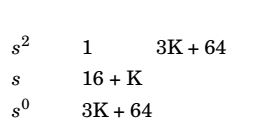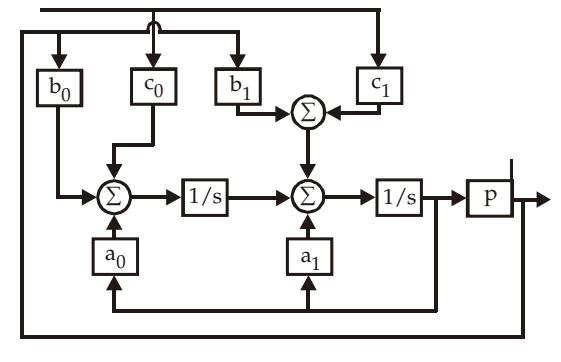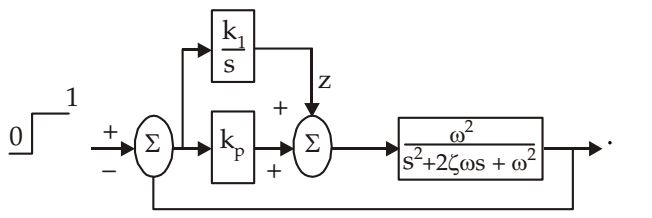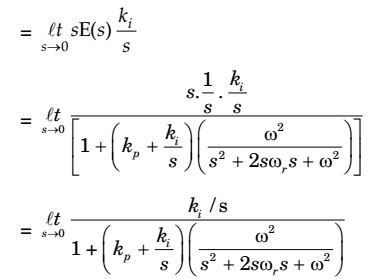Control system miscellaneous
- Consider the discrete-time system shown in the figure where the impulse response of G(z) is g(0) = 0, g(1) = g(2) = 1, g(3) = g(4) =... = 0.

This system is stable for range of values of K
-
View Hint View Answer Discuss in Forum
G(z) = z– 1 + z – 2
Characteristic equation is
1 + KG (z) = 0
⇒ 1 + K (z – 1 + z – 2) = 0
⇒ z2 + Kz + I = 0
Using stability criteria,
| K| < 1
i.e. – 1 < K < 1Correct Option: B
G(z) = z– 1 + z – 2
Characteristic equation is
1 + KG (z) = 0
⇒ 1 + K (z – 1 + z – 2) = 0
⇒ z2 + Kz + I = 0
Using stability criteria,
| K| < 1
i.e. – 1 < K < 1
- If the loop gain K of a negative feedback system having a loop transfer function
K(s + 3) (s + 8)2
is to be adjusted to induce a sustained oscillation then
-
View Hint View Answer Discuss in Forum
Characteristic equation is
1 + K(s + 3) = 0 (s + 8)2
⇒ s2 + (16 + K) s + 3K + 64 = 0
Routh's array,
⇒ No such K exist to make all element of a row equal to 0.
Correct Option: D
Characteristic equation is
1 + K(s + 3) = 0 (s + 8)2
⇒ s2 + (16 + K) s + 3K + 64 = 0
Routh's array,
⇒ No such K exist to make all element of a row equal to 0.
- The system shown in the figure below

can be reduced to the form
with
-
View Hint View Answer Discuss in Forum
By block diagram, technique reduction method
Correct Option: D
By block diagram, technique reduction method
- The transfer function of a linear time invariant system is given as
G(s) = 1 s2 + 3s + 2
The steady state value of the output of this system for a unit impulse input applied at time instant t = 1 will be
-
View Hint View Answer Discuss in Forum
∴ G(s) = y(s) = 1 U(s) s2 + 3s + 2 ∴ y(s) = 1 U(s) s2 + 3s + 2
But U(t) = δ (t – 1)
and U(s) = e– s∴ y(s) = e– s s2 + 3s + 2
For steady state,= e– s = 1 = 0.5 s → 0 s2 + 3s + 2 2 Correct Option: B
∴ G(s) = y(s) = 1 U(s) s2 + 3s + 2 ∴ y(s) = 1 U(s) s2 + 3s + 2
But U(t) = δ (t – 1)
and U(s) = e– s∴ y(s) = e– s s2 + 3s + 2
For steady state,= e– s = 1 = 0.5 s → 0 s2 + 3s + 2 2
- Consider the feedback control system shown below which is subjected to a unit step input. The system is stable and has the following parameters kp = 4, ki = 10 , ω = 500 and ξ = 0.7

The steady state value of z is
-
View Hint View Answer Discuss in Forum
Steady state value of z

= 1Correct Option: A
Steady state value of z

= 1

